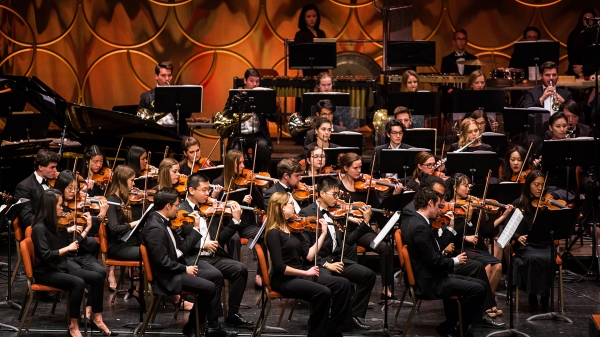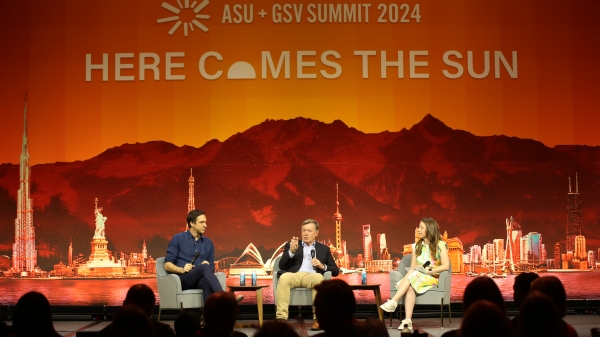Social scientists’ methods don’t always translate well between cultures — here’s how they’re fixing them

There is a problem with the set of tools social scientists use to study human behavior.
Trusted questionnaires and visual aids, they’re finding, don’t always accurately assess people across diverse settings. That’s because they were originally made to test college students and other educated groups in select pockets around the globe.
“In trying to understand how people think and act, social scientists use methods that have been refined over decades to work well for a very unique set of humans, who have had years of regular practice working with them,” said Daniel Hruschka, lead author of the study and professor at Arizona State University’s School of Human Evolution and Social Change.

Daniel Hruschka
His team found this out the hard way when it tried to investigate the link between social closeness and generosity in rural Bangladesh.
“If you dip a kitchen thermometer in a lava pit and the thermometer explodes, you know right away that the measurement was a complete failure,” he said. “The problem is that, in our field, our failures aren’t often as obvious as a thermometer exploding.”
The team saw something was off, and once they realized that their methods were causing problems, they took the opportunity to redesign the “thermometer.” Over the course of four field seasons, they created new tools that not only work at their research site, but hold promise for many other cross-cultural applications.
The details of those efforts by Hruschka and his colleagues, along with their call for a revolution in social and behavioral science, were recently published in an article in Proceedings of the National Academy of Sciences.
From local problem to global solution
Hruschka’s team is interested in examining whether people give up more to benefit friends and relatives, which researchers call “social discounting.” In order to study this in Bangladesh, they asked participants to do a typical exercise: Create an imaginary list of 100 people — ranging from closest friend to most distant acquaintance — and then decide how much of a commodity (in this case, rice) they would give up to benefit people on that list.
But these instructions only confused participants. Attempts to represent different degrees of social closeness by means other than numbers — like overlapping circles, overlapping stick figures or baskets placed left-to-right — were also unsuccessful.
The researchers’ breakthrough came when they arranged baskets to lead away from participants in a line. This setup made more sense to respondents, who used the baskets and photos of adults from their village to rank how close they were with each. The interviewing researcher then used the photos to ask participants about how much rice they would give up to benefit others of various closeness levels.
With this new methodology, the team reached a surprising finding that may have been missed with traditional approaches. Contrary to results from more than 50 studies on college students from around the world, social closeness has no impact on generosity in rural Bangladesh. Since that first finding, the team found a similar result in rural Indonesia. Now, they’re working to figure out why an assumed “universal” behavior actually varies greatly across cultures.
"Tools that work in a wide range of contexts will be crucial in finding new insights into human thought and behavior around the world."
— Professor Daniel Hruschka
The researchers used the new methods to assess U.S. college students, who had previously done similar exercises using classic methods. The results were unchanged, showing the previously established strong link between closeness and generosity in this demographic. This confirmed that the new methods are accurate and work equally well in different global settings.
“We’re calling on researchers to develop more culturally sensitive methods for interacting with the full breadth of humanity,” Hruschka said. “Such efforts will require a combination of engagement, listening to participants and teaming up with local researchers who are willing to question standard practices.”
“Tools that work in a wide range of contexts,” he added, “will be crucial in finding new insights into human thought and behavior around the world.”
More Arts, humanities and education

ASU Symphony Orchestra welcomes visionary conductor Jonathan Taylor Rush
Guest conductor Jonathan Taylor Rush will join Arizona State University’s Jason Caslor, director of bands, to lead the ASU Symphony Orchestra in their final concert of the season, “Trailblazers,” on…

Chemistry classes are key to art student's success
Amanda Barnette has a passion for art preservation. That means that, for the past four years, the Arizona State University student’s schedule was filled with classes that fit her artistic bent:…

ASU+GSV Summit tackles big questions about AI, technology, education
Editor's note: We'll be updating this story daily throughout the summit. The annual ASU+GSV Summit kicked off in San Diego on Sunday, drawing thousands of leaders for a four-day event that focuses…